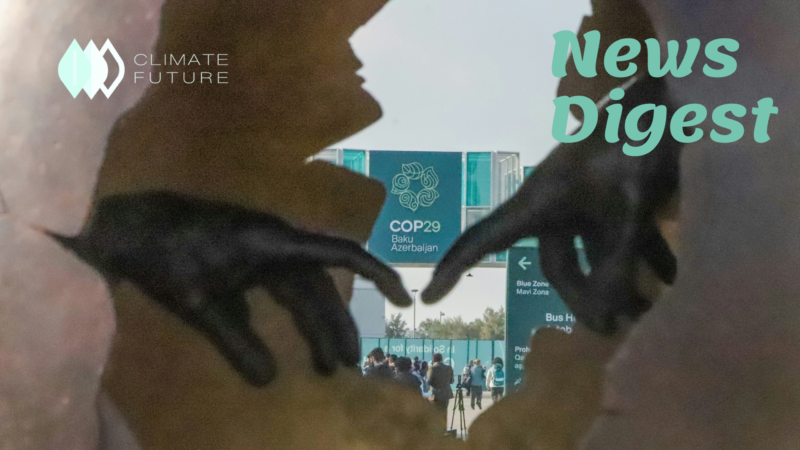MENA Climate Week Opens with Aim To Accelerate Climate Action
MENACW 2022, the first-ever Middle East and North Africa Climate Week opened on 28 March 2022 with a strong call to increase implementation of the Paris Agreement. It is held until 31 March and organized by the Government of the United Arab Emirates (UAE) in collaboration with multilateral agencies and the United Nations. At COP26, a decision is made to reduce emission and achieve bold climate goals. A common set of guidelines was made to allow all countries to move forward together. This is crucial for the MENA region which is a main energy producing region. The UAE is the first country in the MENA-region to launch a net-zero emissions plan by 2050 apart from hosting MENACW 2022. It consists of $163 billion investment in renewable energy. It boasts the biggest single-site solar park in the world with the aim to save more than 6.5 million tons of carbon emission yearly. MENACW 2022 has three key areas to focus: integrating ambitious action across key economic sectors in national planning, adapting to climate risks and building resilience into development strategies and catching transformational opportunities through breakthrough solutions and technology innovation. It is one of the first opportunities to move regional momentum forward to COP27 in Egypt.
The Return of the Youth Climate Strike
On March 25, 2022 in Rome, Italy, climate activists took part in Friday for Future movement as a part of the Global Climate Strike which is a call to action against climate change. Due to the lockdowns and public health restrictions for COVID-19 pandemic, activists around the world are once again marching on the streets after a two-year gap to demand to address the crisis rapidly. Photos of the protests have been trendy on Twitter and other social media. High school students are protesting in front of an investment bank in Tokyo with the demand to stop financing new coal plants. By returning the demonstrations to the streets, climate change campaigners hope to make a force like they did in 2019 by persuading the leaders to take concrete action against the oil and gas industry which holds the world’s political and economic systems. According to the reports from the scientific community, the climate crisis is progressing faster than previously thought by leaving less time to make solutions due to Friday’s strikes.
Climate Change Adaptation – The other side of the coin
When decarbonization is crucial and gaining momentum, climate change adaptation which is the other side of the climate action agenda should not be forgotten. According to the Adaptation Gap Report from the United Nations Environment Program Emissions (UNEP), there was a rise in temperature of 3°C. Even though there are the most ambitious decarbonization efforts, some changes bring unavoidable consequences since they are locked into planetary systems. According to the European Commission, climate change adaptation is defined as taking an action plan and adjusting to the present effects of climate change and predicted impacts in the future. From the perspective of climate risk management, adaptation will be a key element to minimize climate risk. People are experiencing the impacts of climate change more closely in daily life. If there is no adaptation, many highly populated Asian mega cities will be at a high risk of typhoons and floods. Unpredictable weather conditions have a negative impact directly on renewable energy production in the long term. As stated by the green bond database records of Climate Bonds Initiative, only 1.7% is allocated to finance climate resilience and adaptation activities among the global green bonds. The Asia Development Bank (ADB) suggests that Asia must invest $ 45 billion a year until 2030 to adapt to climate risk adequately.
Asian Banks Falling Short of Climate Change Pledges
According to Singapore-based environment group Asia Research and Engagement (ARE), it is found out that over 32 banks in Asia made no clear plans or commitments to meet Paris agreement goals. Although approximately 200 countries signed a pact last year in Glasgow to call on financial institutions globally to assist climate change goals, Asia has not made any efforts yet. Out of the 32 banks, only nine showed long-term net-zero commitments for financing emissions while thirteen had policies to prohibit the financing of new coal-fired power. However, none of the banks made adequate implementation plans or clear commitments to meet the goals of the Paris agreement. Even though they lag efforts with limited commitment, the banks at the region launched new plans to focus on green finance. There can be a concern about greenwashing when the banks seek a marketing benefit for sustainable finance by giving more financial assistance to dirty industries. Singapore’s DBS ranked the highest Asian bank through ARE report and it doesn’t have gaps in financing policies. China is a major player in Asia to attain the climate change ambitions.
UN: Climate Change to Uproot Millions, Especially in Asia
Asia is the highest in the world in the number of people displaced by extreme weather. Jakarta, the world’s most rapidly sinking major city demonstrates how climate change is making more uninhabitable places. It is expected that one-third of the city will be submerged in the coming decades in some parts due to the rising Java Sea. According to an Intergovernmental Panel on Climate Change report, 143 million people are likely to be uprooted in the next 30 years because of drought, rising sea level, searing temperatures and other climate catastrophes. It is estimated that nearly 40 million people in South Asia may be forced to move out from their home over the next 30 years due to crop failure, lack of water, storm surges and other disasters. Scientists predict that 2 million people from the low-lying country can be displaced by sea level rises by 2050.
UN weather agency to spearhead 5 year early warning plan, boosting climate action
Secretary-General Antonio Guterres said early warnings and action save lives and we have to invest equally in resilience and adaptation which includes the information to predict about floods, droughts, heatwaves and storms. According to the latest report of the Intergovernmental Panel on Climate Change (IPCC), the rise in global heating can increase the intensity and frequency of extreme weather events. Mr Guterres said it was hard to accept that one-third of the world’s people are living mostly in small island developing States (SIDS) and least developed countries (LDC). It is worse in Africa with the lack of coverage for 60% of people. Climate change has led to extreme weather conditions in all parts of the world. On the other hand, the rise in moisture in the atmosphere can cause deadly flooding and extreme rainfall while ocean warming causes rising sea levels and powerful tropical storms. According to a 2021 WMO disaster statistics report, a climate related disaster happened on average each day over the past 50 years by causing daily losses of $202 million and taking the lives of 115 people. An integrated early warning system for climate related disasters alerts people to upcoming hazardous weather and alarm the individuals, communities and governments so that the impact can be minimized. In order to achieve universal coverage of early warning services, WMO will expand country capacities and find to close observation gaps to form a people-centered, accessible and inclusive approach.



